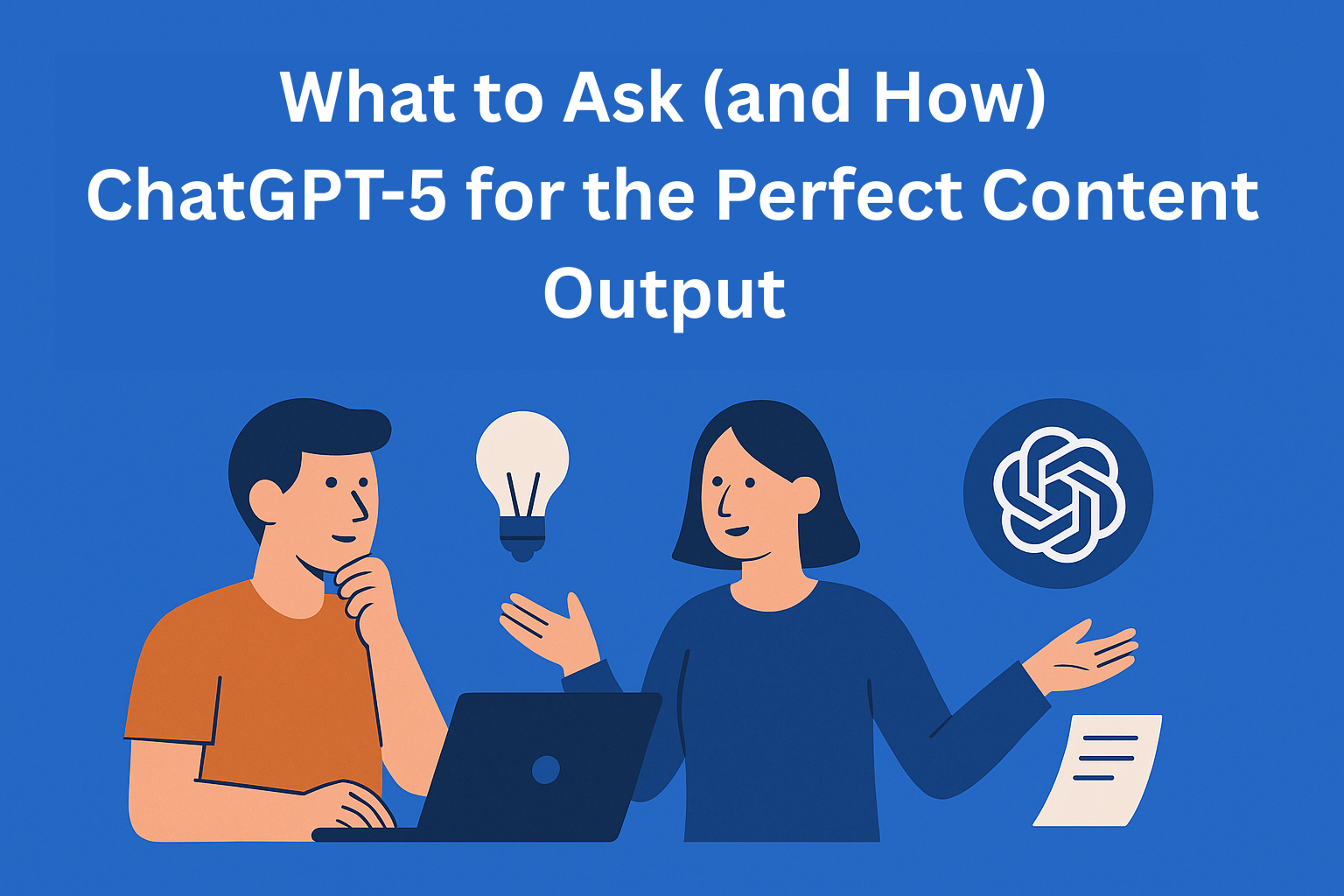ChatGPT-5: What to Ask (and How) for the Perfect Content Output
GPT-5 is faster, smarter, and easier to work with - but great content still depends on how you prompt it. Learn how to use its new features to get better results with less effort.

The release of any new model is exciting, but what are we getting with GPT-5? Well, it’s faster, more accurate, and can handle much more context than before. But if you use ChatGPT for content creation, there’s one big question to answer: Does the way we talk to it need to change?
Do we still need to spend half our time crafting super-detailed prompts? Or is GPT-5 now smart enough to take a short, vague request and still give us something great? Let’s break down what’s new, what’s changed, and how to get the most out of the model when creating content.
Key Takeaways
- GPT-5 is more powerful, but still needs direction - better memory, tone control, and speed won’t help much without clear intent.
- Detailed prompts still matter, but less micromanaging - focus on goals, audience, tone, and let GPT-5 handle the nuance.
- Prompt smarter, not longer - clear structure, tone preferences, and context work better than over-engineered instructions.
- Use GPT-5’s tone modes and self-editing features - experiment with personality settings and ask it to refine its own output.
- Your role shifts from prompt engineer to editor - spend less time crafting prompts, and more on polishing and aligning content.
What’s New in GPT-5?
GPT-5 isn’t just a small improvement over GPT-4; it’s a big jump forward. The main upgrades that matter for content creators are:
- Better reasoning and accuracy - GPT-5 makes fewer mistakes and follows complex instructions more reliably.
- Massive context memory - You can feed it far more information at once (like a full brand style guide or several past blog posts) and it will keep it all in mind while writing.
- Tone and personality modes - You can choose different styles, like “Listener” or “Nerd,” to match your content’s voice.
- Faster response times - Even with complex, multi-step requests, the output arrives quicker.
In short, GPT-5 is sharper, faster, and more adaptable than before. But it still needs direction.
Do We Still Need Detailed Prompts?
The short answer: Yes, but maybe not as detailed as before.
With GPT-4, you often had to spell out every little thing - formatting, tone, structure, and so on. GPT-5 is much better at filling in the blanks, but if you want a specific result, you should still give it specific instructions.
Think of it like working with a talented junior writer:
- If you give them a vague brief, you’ll get something good, but probably generic.
- If you give them a clear outline and examples, you’ll get something that feels spot-on for your brand.
How to Prompt GPT-5 for Better Content
The way we write prompts has shifted slightly with GPT-5. You can now focus more on intent and less on micro-managing every detail, but the fundamentals still apply.
Here’s what works best:
- Give it the big picture - Include the goal of the piece, the audience, and any must-have talking points.
- Share your style upfront - If you have brand guidelines, paste them in or upload them.
- Be clear on structure - Tell it if you want sections, bullet points, a summary at the top, or specific word counts.
- Use tone modes - Experiment with personality settings to see which works best for your brand voice.
- Ask it to self-check - After it writes, ask it to review and improve its own draft before you see it.
An Example in Action
Here’s the difference in how you might prompt GPT-4 vs GPT-5:
Old style (GPT-4):
Write a 1,200-word blog post on email marketing best practices for SaaS. Include an intro, 4 main sections with H2s, at least 3 bullet lists, and a CTA at the end. Use a friendly but professional tone. Avoid generic phrases like “in today’s digital world.”
New style (GPT-5):
Write a 1,200-word blog post on email marketing best practices for SaaS. The audience is marketing managers. Goal: actionable tips they can implement immediately. Use a friendly but professional tone. Include an intro, 4 main sections, and a CTA at the end.
The GPT-5 version is less detailed but still delivers a better first draft because the model understands more from less.
What Hasn’t Changed
Even with all its upgrades, GPT-5 still isn’t perfect. You still need to:
- Fact-check everything - Hallucinations are rarer, but they still happen.
- Edit for brand alignment - GPT-5 can mimic style guides well, but it’s not flawless.
- Give feedback - If you don’t like something, tell it. The more you correct it, the better it adapts.
Final Thoughts
ChatGPT-5 changes the game for content creation - not by replacing the need for good prompting, but by making it easier to get high-quality drafts faster.
The key takeaway? Be clear, not long-winded. Give GPT-5 the important details, trust it to fill in the rest, and then fine-tune the result.
If you’ve been spending 20 minutes crafting prompts just to get a usable first draft, you can probably cut that time in half now. That means more energy for what really matters - editing, polishing, and putting your creative stamp on the work.






